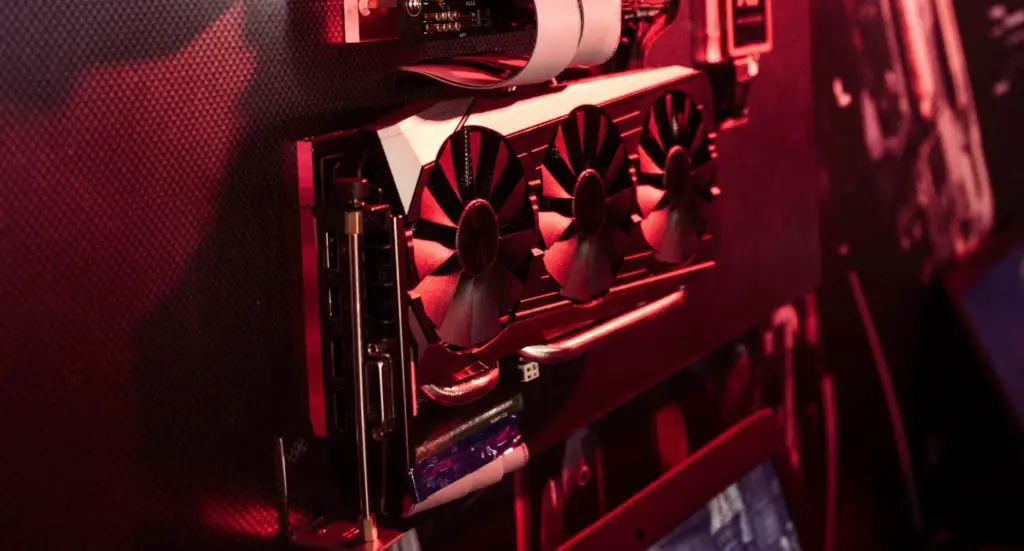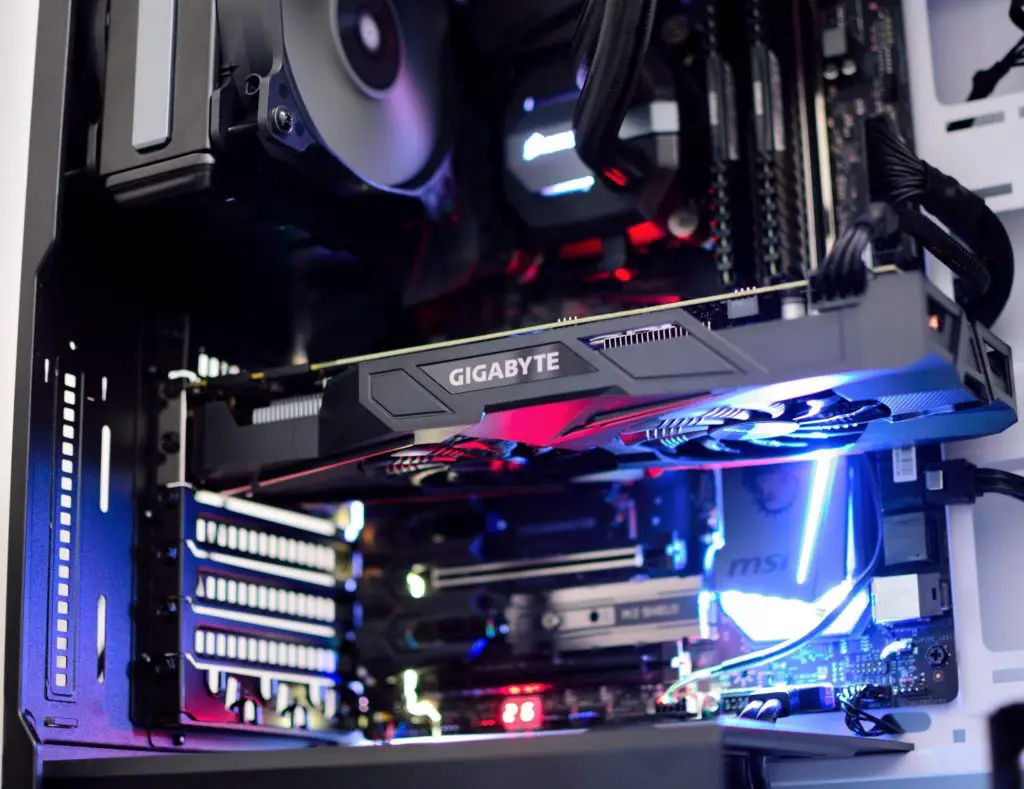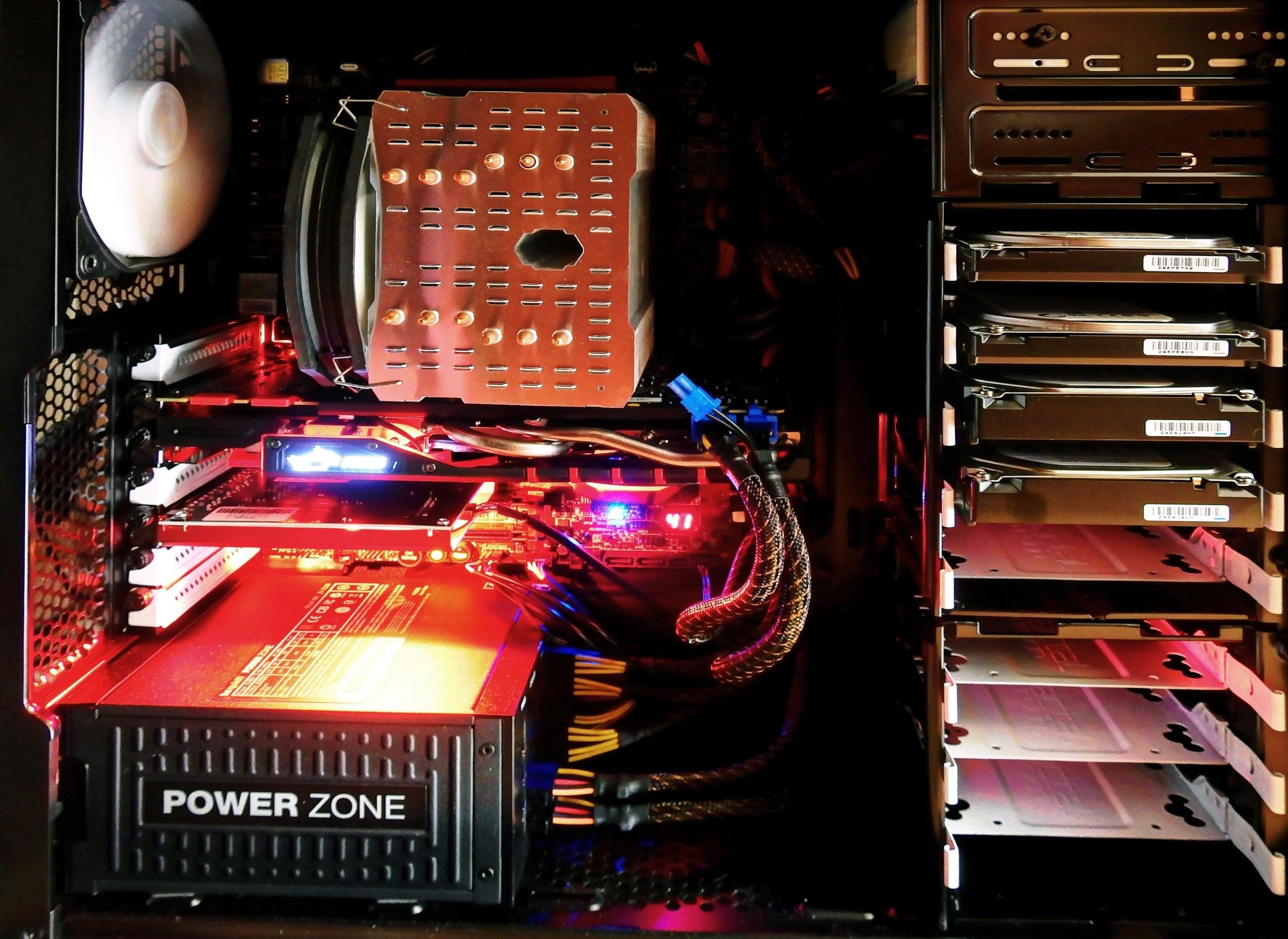Graphics cards are considered the heart of any gaming desktop computer.
It’s what produces high-quality images on the screen and is also what keeps the frames high. Because of that, it’s important that you take actions ahead as a responsible owner to prolong their expected lifespan.
But what exactly are the most effective ways to do so? Here are 10 ways to extend your GPU life.
Also read: 11 Best Game Recording Software for Windows
Why It’s Important to Make Precautions Ahead
Graphics cards are built for performance. But just like an athlete, proper maintenance and care are vital to achieving a consistent output.

Taking adequate precautions ahead ensure that these cards will perform just as good or very close to as they were initially purchased. Without proper care and maintenance, it’s highly possible for a graphics card to perform inconsistently or fail entirely sooner.
What proper maintenance and care do, simply prolongs the life of any graphics card entirely. It’s worth noting that because these things are likely to suddenly fail than degrade over time, taking proper measures to maintain them will definitely reward you with a well-invested graphics card.
What’s the Safe GPU Temperature?
There’s no ideal temperature for all graphics cards since they differ in construction and performance capability.
Because manufacturers design a variety of cooling systems for the graphics cards, it’s unlikely you’ll see similar readings. There are other manufacturers that sell graphics cards with only one fan while others sell 3 fans of the same type of graphics card.
But regardless of the different cooling structure and design, it’s a rule of thumb that graphics card temperatures shouldn’t go over 80 degrees Celsius or 176 degrees Fahrenheit when under load. However, there are other graphics cards that can safely go over 90 degrees Celsius or 194 degrees Fahrenheit.
So unless it’s specified by the manufacturer, staying under 80 degrees Celsius (176 degrees Fahrenheit) should be your limit. Read the following to learn how to track your GPU’s temperature using a 3rd party software.
What to Do to Keep Temperatures Down?

If GPU temps are over the safe temperature limit indicated by the manufacturer, follow the below tips to bring and keep the temperatures down, prolonging its lifespan.
1. Keep The Inside of the Case Cool
A computer with a cool case is a happy computer– literally. Keep the temperatures inside the case as low as you possibly can.
This is one of the best ways to significantly prolong the life of your GPU. By keeping the temperatures low, your graphics card can perform in their optimal state without having to deal with possible breakdowns or hiccup due to extreme heat.
2. Have Enough Airflow Inside
A system unit takes cold air in from the front of the case and exhausts the hot air through the exhaust fans, which is usually located at the back or the top part of the case. By having optimal airflow inside the case, you keep the system cool.
Graphics cards give off heat inside the case as processors do but if both were released from the same year/generation, it’s almost always that graphics cards give off more. However, where the air is thrown out still depends on the graphics card’s cooling system.
And there are currently 2 types of graphics card cooling system:
- Blower fan (reference cards) – takes in air from inside the case to cool the graphics card and blows air out to the back of the case.
- Open-air (non-reference cards)– takes air from the direction where the fans are facing and expels hot air inside the case.
Seeing as how open-air or non-reference cooling fans are likely to contribute more heat inside the system, the need to have more case fans will be needed to make sure air is dissipated from the system more efficiently.
Ideally, you want to have an equal amount of intake and exhaust to have a balance of positive and negative air inside the case. Too much of either will lead to either positive or negative airflow, which is what you want to avoid.
3. Get An Aftermarket GPU Fan
Even though graphics cards have their own heatsink and cooling system that tends to perform efficiently out of the box, there are aftermarket GPU fans that perform significantly better.
These are specifically designed to dissipate air better because either they have 2 or 3 fans or they have a more durable, higher RPM fans that are more efficient at cooling.
In most cases, the cooling systems that come with the GPU out of the box are fine. But if you’re planning to push the limits of your graphics card by overclocking it, it’s recommended that you should consider investing in an aftermarket GPU fan for light overclocking projects or aftermarket GPU liquid cooling systems if you’re serious about it, which comes in next.
4. Get An Aftermarket GPU Liquid Cooling System
If you serious about overclocking your GPU to get more frames, it’s advisable that you invest in an aftermarket GPU liquid cooling system.
Similar to AIO CPU coolers and liquid CPU coolers, these aftermarket GPU liquid coolers cool better since they use the liquid element as the medium to cool the processing unit of the graphics card.
Needless to say, these come at a higher price but is always considered a worthy investment, especially if used for what these are really intended for– serious overclocking.
5. Be Responsible Enough to Change Thermals
You don’t have to do this on a very frequent basis. But it’s important that you consider changing the thermals when GPU temperatures are off or if the readings are just basically higher than what it initially used to.
In most cases, builders change at least once every 2 years or 1.5 years. However, if it shows signs indicating high-temperature readings recently sooner than that, you’d be better off changing it ASAP before it fails and breaks down for good.
6. Keep Track of the Temperature
There are plenty of third-party software programs that you can use to track your GPU’s temperatures. And one of the most popular software out there is the MSI Afterburner.
Once you have it installed, make sure you select your respective graphics card from the user interface and it should reflect your graphics card’s temperature either every second, every 30s, or every minute– depending on your presets.
7. Dust It Off Regularly
Graphics cards do accumulate specks of dust over time like how a stand fan or desk fan would. This is why dusting it off on a regular basis is very important.
Accumulated dust on and around the fan blades reduces the cooling performance of the cooling system. And to alleviate higher temperature buildup, more power will be drawn from the power supply to push higher RPMs hit lower temperatures. Eventually, this then affects the system as a whole.
Fortunately, a can of compressed air is all you need to get rid of specks of dust. Just point it towards the fan blades or the heatsink of the graphics card and fire away.
It’s also worth noting that when doing so, you must hold the fans down to keep the fans from spinning randomly at high speeds. Cans of compressed air have so much air pressure that, in some cases, small fans could get damaged from spinning at high velocity.
Use baby wipes to wipe off the remaining pieces of dust that the can of compressed air didn’t remove.
8. Underclock Your GPU Clock Speeds
Graphics cards today are usually overclocked for the purpose of reaping more frames in games. However, a person may deliberately underclock a GPU safely that’s powerful enough for what you really need.
Underclocking your GPU when it can throw out more than what you need has its fair share of benefits: low power consumption and less stress to the GPU– which is just what it needs to prolong its lifespan.
9. Buy A Bigger Case
Even if you have enough fan cases inside the system, it still isn’t a guarantee that your case is getting optimal airflow inside, especially if it’s a small case. Consider getting a bigger case if the system unit appears crowded inside.
If you have a high-end graphics card like a GTX 1070 or a GTX 1080 and their respective Ti variants, you’ll surely need a big case to maximize airflow inside the case.
Most of these high-end cards are big and will surely take up a huge part inside though it’s possible to spot mini variants of these power cards in the market.
10. Place It In A Well-Ventilated Place
The last on the list but definitely not the least effective way to prolong your GPU is to place the entire system unit in a well-ventilated area.
Avoid places like inside the cabinet under your computer table as it’s possible that heat will damage the system.
Doing so will eventually damage not only the GPU but the entire system from poor ventilation. If you have no choice but to place it inside for whatever reason, consider installing at least 1 intake and 1 exhaust fans to and from the cabinet itself to still promote good airflow.
Does overclocking reduce the life of a GPU?

Overclocked GPU generates more heat from higher voltage intake and even if you can keep the temperature down, there’s still a higher voltage intake that pose a risk to your GPU.
The graphics card is rated to work with a set of voltage range. Exceeding these limits through the process of overclocking increases the possibility of ruining the component to a certain degree, depending on the material and how sensitive it is.
Overclocking, as a whole, is generally considered as a high risk-low reward type of investment. Plus this could void your warranty.
So, unless you’re 100% certain that you’ll benefit from overclocking, I suggest you stay with the default presets.
Conclusion
Extending the lifespan of your GPU boils down to proper care and maintenance. As long as you follow these tips, it shouldn’t be likely that you’ll need a new GPU anytime soon unless you really need to upgrade for personal reasons.
How many of these are you following in an attempt to prolong your GPU lifespan? How many you just knew about? Share it down the comments below!
